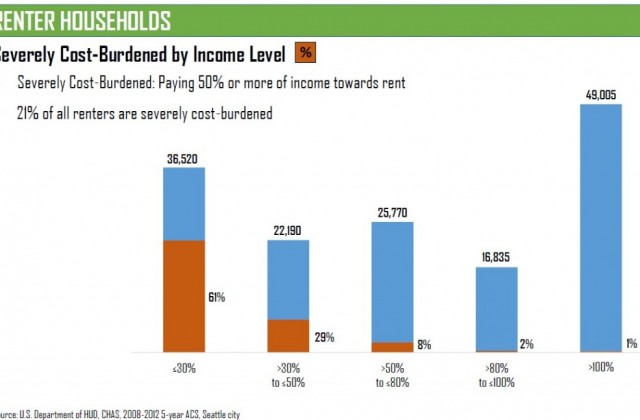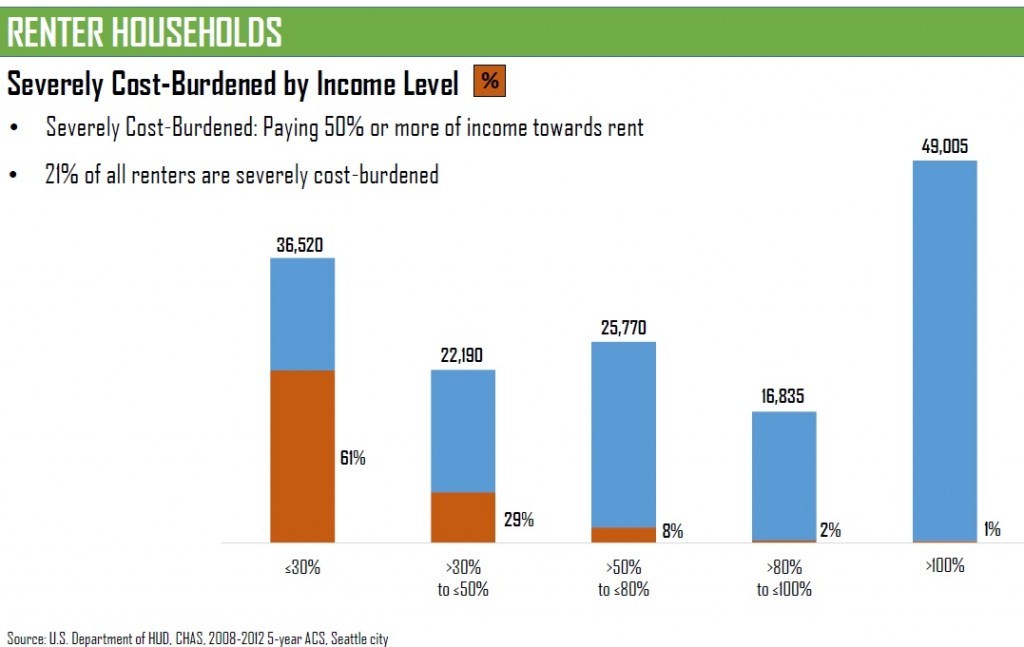Housing Data: We Can Solve Problems AND Feel Better Too
Think about any problem you might have in your own household or at work. Usually that problem comes with two kinds of measures, quantitative and qualitative. For example, if you’re running low on milk you know what “low” means when you pick up the carton and if feels lighter than usual. That’s a qualitative measure. You know how much to buy, 12, 16, or 20 ounces, based on your experience with how much milk your family use in a week. That’s your quantitative measure. One is a feeling and the other one is a number. What bedevils our discussion of housing in Seattle is the continual muddling of these two kinds of measurements by City officials, advocates, and the press are leading to bad policy. There is recent an example from Councilmember Lisa Herbold that’s worth pointing out.
In a blog post on the City Council’s blog, Herbold trots out some figures we’ve seen before. The conversation she facilitated about existing affordable housing is described as
Wide-ranging, but the problem can be neatly summed up in three slides. First, here’s the distribution of Seattle’s renters across income levels, and the number who are “severely cost burdened” meaning 50% or more of their income is going toward rent:
The breathless conclusion is:
- There is almost no housing that is affordable for the 36,000 households making 30% of annual median income (AMI) or less.
- Almost all the “workforce housing,” the housing affordable for those making 50-80% of AMI, is older housing.
Shocking! Slap your forehead! The truth is that the charts don’t say much more than poor people have trouble paying for housing. Is it really a shock to learn that a person who earns 30 percent of Area Median Income (AMI) $19,000 a year has trouble paying for housing? Of course a person earning such a low income is going to pay an enormous percentage of their income on housing – and on everything else. They are poor! They likely pay a larger share of their income for everything from food to transportation to health care if they even have it.
The perpetually left leaning Council led by Herbold always talks about this as a housing problem when it simply isn’t – it’s a poverty problem.
Let’s look at the problem in another way. I have a friend who just had a new baby in February. Here’s what one article says she can expect to pay for diapers:
Parents can count on spending close to $50 per week ($2,448 per year) on diapers, formula and baby food alone. Then toss in such big-ticket items as furniture, equipment, clothes, childcare if you’re returning to work, medical expenses, and well, you get the idea.
For someone earning $19,000 per year, before taxes, that’s roughly 7 percent of their income not to mention, as the article does, all the other expenses. So can we expect Councilmember Herbold to lead a crusade against diaper companies demanding more affordable diapers? Will we tax diapers to somehow reduce their price? Diaper Linkage Taxes? Mandatory Inclusionary Diapers? Of course not. That would a waste of energy because we recognize that many existing anti-poverty and job training programs are trying to reduce costs for poor people and provide them with opportunities to increase their wages.
On the upside, the discussion reported in the blog post seemed to be headed in a better direction than most (i.e. how can we tax and fee “greedy developers” to solve the housing “crisis”), focusing on how to help use existing tools to preserve older, cheaper, market rate units.
The obvious thing from the charts—especially the first one—is that the “cost burden” goes down as income increases. We also know that housing prices fall when production keeps up with demand for housing. We also know more jobs means better wages. We also know that as we add more, higher priced, new housing to the market, people with more money take those units, reducing price pressures on older housing.
The solution to the housing “crisis” is to do everything we can to welcome growth from economic development and new jobs: that helps wages. We should also reduce barriers to housing production created by overregulation and costs from fees, taxes, and fines on new housing. More new, market rate housing means a more favorable ratio of dollars to housing units, reducing inflation in the housing market. And in cases where families are so poor that they simply can’t buy any housing at all, we use public finance and taxation to fairly and evenly raise revenue—including from the development and operation of new and existing housing development—for smart programs like vouchers to ameliorate the housing cost burden on our city’s poorest family.
Unfortunately, City leadership does the opposite, blaming housing production for a housing crisis, creating feel-good penalties for developers, and mixing measures about how expensive housing feels (affordability expressed as a ratio of income to housing cost) rather than investing in broad programs that increase the number and variety of jobs in our economy, reducing limits to production of housing, creating smart voucher programs, and building subsidized housing for only the poorest of poor and homeless families. The smart solution would make us feel better and actually solve the problem. That would be an accomplishment.



